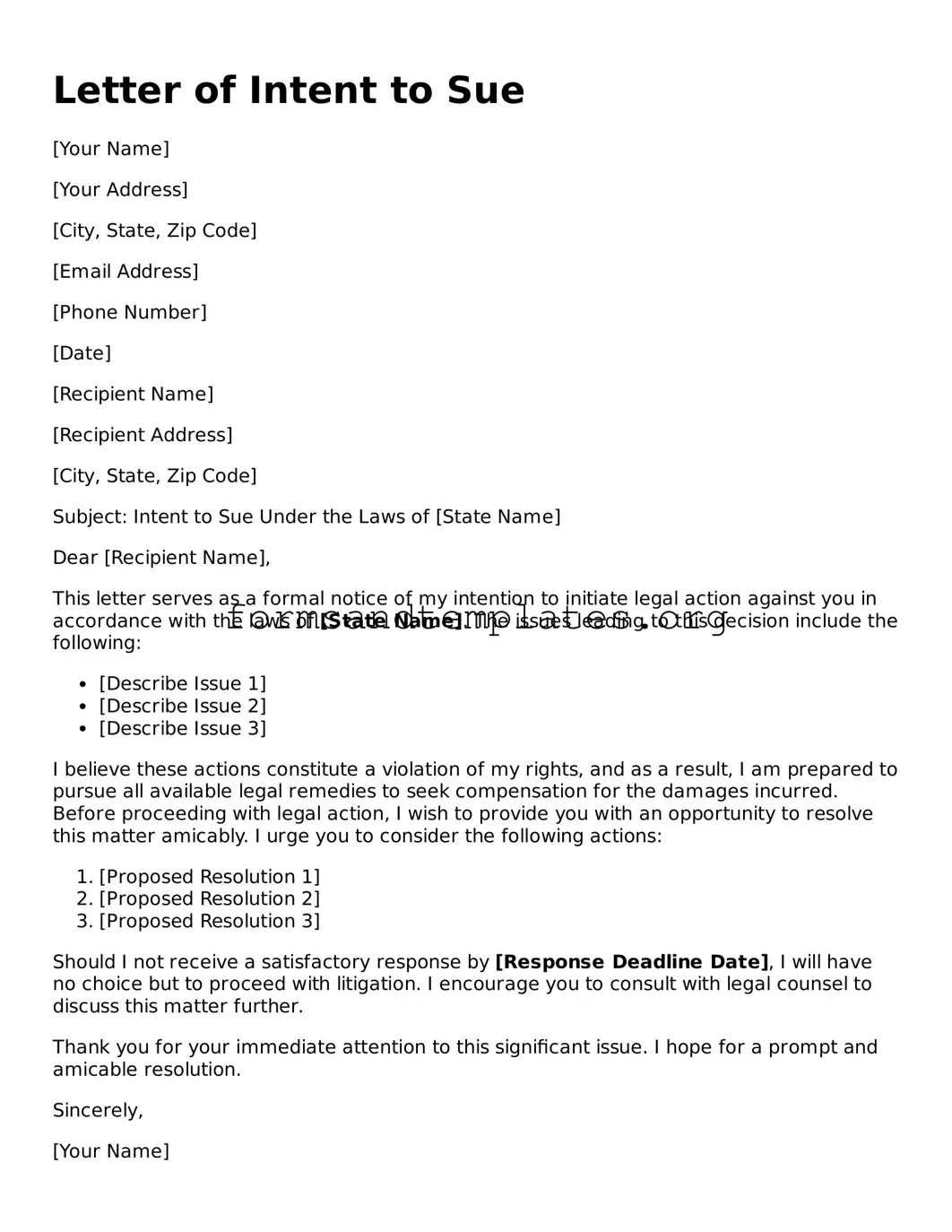Letter of Intent to Sue
[Your Name]
[Your Address]
[City, State, Zip Code]
[Email Address]
[Phone Number]
[Date]
[Recipient Name]
[Recipient Address]
[City, State, Zip Code]
Subject: Intent to Sue Under the Laws of [State Name]
Dear [Recipient Name],
This letter serves as a formal notice of my intention to initiate legal action against you in accordance with the laws of [State Name]. The issues leading to this decision include the following:
- [Describe Issue 1]
- [Describe Issue 2]
- [Describe Issue 3]
I believe these actions constitute a violation of my rights, and as a result, I am prepared to pursue all available legal remedies to seek compensation for the damages incurred. Before proceeding with legal action, I wish to provide you with an opportunity to resolve this matter amicably. I urge you to consider the following actions:
- [Proposed Resolution 1]
- [Proposed Resolution 2]
- [Proposed Resolution 3]
Should I not receive a satisfactory response by [Response Deadline Date], I will have no choice but to proceed with litigation. I encourage you to consult with legal counsel to discuss this matter further.
Thank you for your immediate attention to this significant issue. I hope for a prompt and amicable resolution.
Sincerely,
[Your Name]
[Your Title or Affiliation, if applicable]
